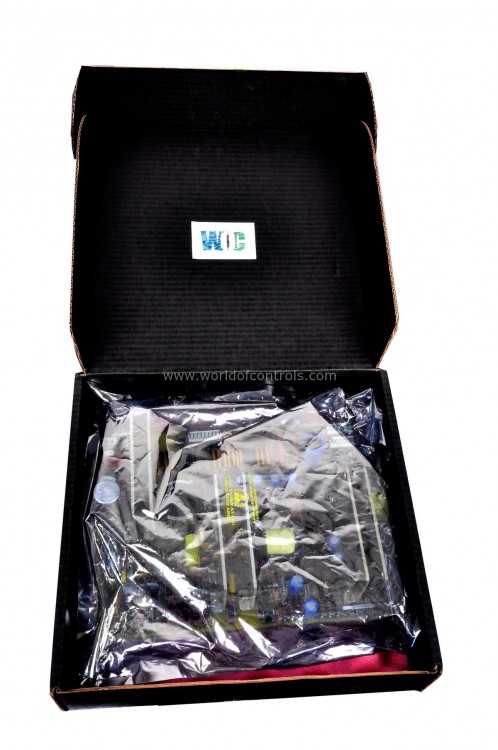SPECIFICATIONS
Part Number: DS200QTPAG1A
Manufacturer: General Electric
Series: Mark V
Product type: Printed Circuit Board
Availability: In Stock
Country of Manufacture: United States (USA)
Functional Description
DS200QTPAG1A is a Printed Circuit Board designed and developed by GE. It is a part of the Mark V control system. Mark V is a microprocessor-based turbine control systems meticulously crafted for turbine control applications. The Mark V is versatile, suitable for employment across a spectrum of turbines, including medium or large steam turbines, heavy-duty gas turbines (single or two-shaft), and aircraft derivative gas turbines.
System Features
- Unit control and protection are paramount in turbine operations, achieved through a synergistic combination of the Mark V system and sensors/devices integrated onto the unit and its auxiliaries. Enhanced unit reliability is realized through the implementation of redundant sensors and devices, ensuring the robust feedback, control, and protection of critical functions. The fail-safe architecture of the Mark V is exemplified by its design considerations for connecting redundant devices to the control panel and their meticulous regulation by the control software, culminating in a highly reliable turbine control and protection system.
- In its standard configuration, the Mark V elevates unit reliability through the integration of three redundant control processors, embracing a triple modular redundant (TMR) design philosophy. This innovative approach ensures seamless operation, control, and protection of the unit even in the event of a control processor or component failure. The TMR architecture allows for the continued operation of the turbine, with the capability to isolate and repair a faulty control processor without necessitating a turbine shutdown.
- An additional hallmark of the system is its adoption of software-implemented fault tolerance (SIFT) technology. Each control processor within a TMR control panel independently evaluates control and protection functions based on distinct inputs. Through a process of voting, wherein control processors collectively assess inputs, erroneous readings from a single processor are outweighed by the majority consensus, ensuring accurate decision-making even in the presence of faults.
- For instance, in the scenario of a logic signal representing digital input from a pressure switch sensing lube oil pressure, the SIFT mechanism ensures redundancy and fault tolerance by communicating this signal to each of the three redundant processors in a TMR control panel through individual I/O communication channels. This rigorous approach to fault tolerance and redundancy underscores the Mark V's commitment to reliability, safety, and uninterrupted turbine operation in critical industrial settings.
Backup Operator Interface Panel
- The Backup Operator Interface Panel (BOI) serves as a supplementary means of monitoring and controlling turbine functions within the Mark V System. This ancillary device provides redundancy and additional functionality to ensure uninterrupted operation and enhanced control capabilities.
- The BOI is equipped with its own dedicated communications link directly connected to the three control processors R, S, and T. This direct connection enables seamless communication and synchronization between the BOI and the control processors, ensuring real-time monitoring and control of turbine operations.
- Featuring an LCD panel accompanied by a keypad interface, the BOI is typically mounted on the control panel for easy access and visibility. However, its design also allows for flexible placement to accommodate specific operational requirements.
- The BOI facilitates a range of essential functions, including the ability to start and stop the unit, load or unload it, acknowledge alarms, silence alarms, reset process alarms, and monitor unit operation. This comprehensive functionality empowers operators with the tools necessary to effectively manage turbine operations and respond to varying operational scenarios promptly.
- By providing redundancy and expanded control capabilities, the BOI enhances the reliability, efficiency, and safety of turbine operations within the Mark V System, ensuring optimal performance and peace of mind for operators and maintenance personnel alike.
WOC is available 24x7 to assist you with any of your General Electric requirements. Please contact us by phone or email for pricing and availability on GE, Bently Nevada or Woodward parts and repairs.
FREQUENTLY ASKED QUESTIONS
What is DS200QTPAG1A?
It is a Printed Circuit Board designed and developed by GE
What is the Backup Operator Interface Panel?
The BOI is an ancillary device within the Mark V System that serves as a secondary means of monitoring and controlling turbine functions. It provides redundancy and additional functionality to ensure uninterrupted operation and enhanced control capabilities.
How is the BOI connected to the control processors?
It has its own dedicated communications link directly connected to the three control processors R, S, and T. This direct connection enables seamless communication and synchronization between the BOI and the control processors, facilitating real-time monitoring and control of turbine operations.
What are the key features of the BOI?
It features an LCD panel with a keypad interface, typically mounted on the control panel for easy access and visibility. It allows operators to start and stop the unit, load or unload it, acknowledge alarms, silence alarms, reset process alarms, and monitor unit operation.
Where is the BOI usually mounted?
It is usually mounted on the control panel for convenient access. However, its design also allows for flexible placement to accommodate specific operational requirements.
